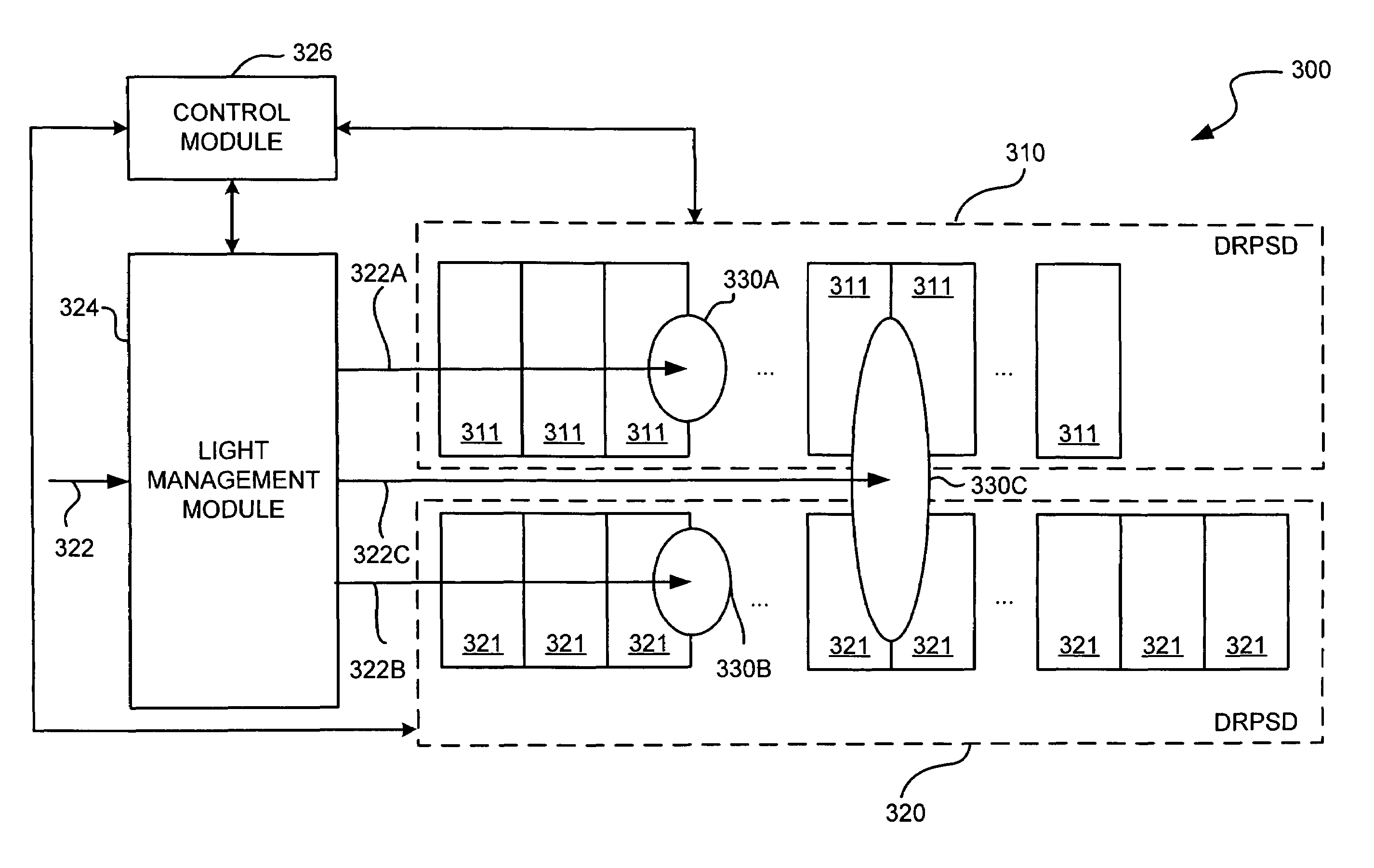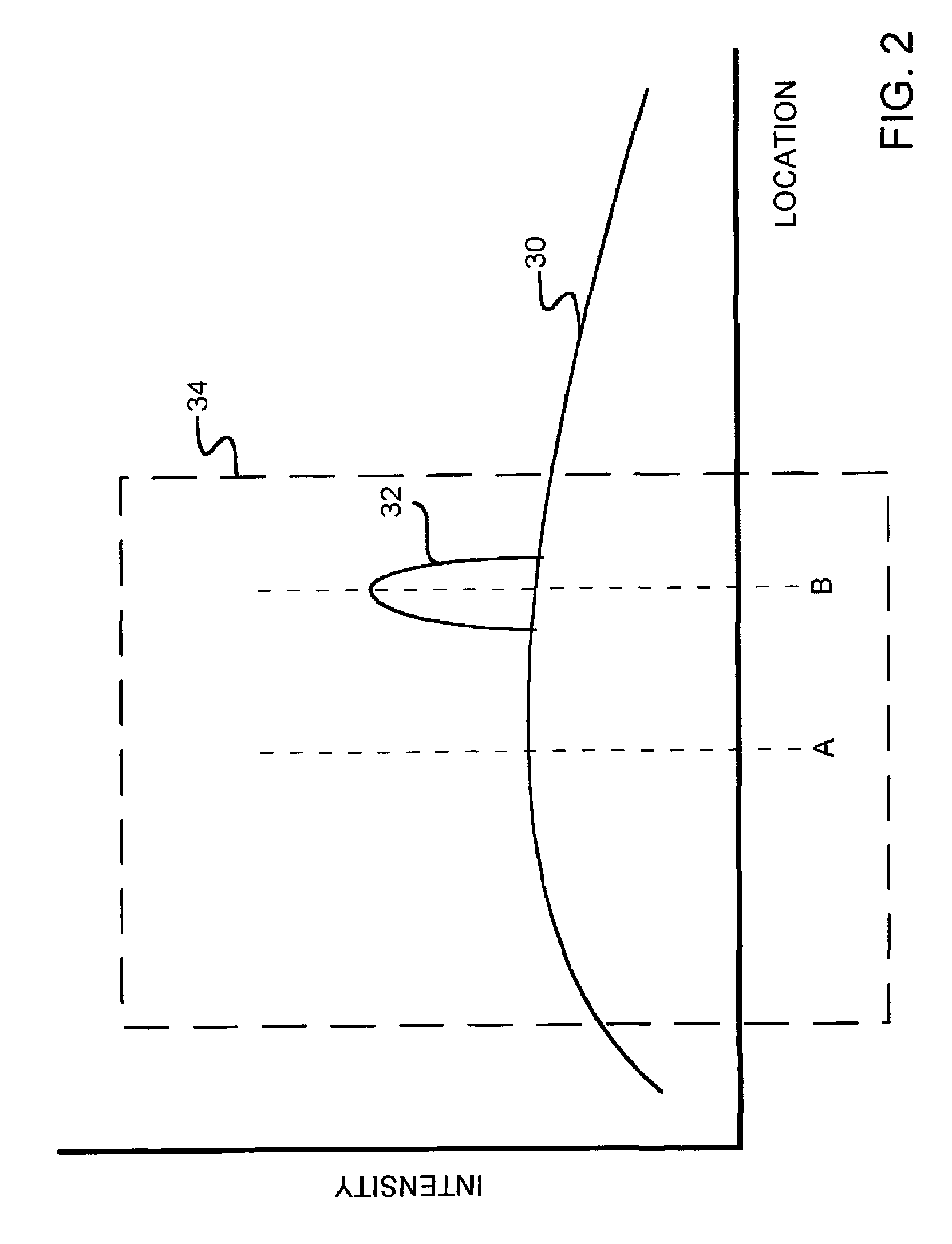System and method of light spot position and color detection
a technology applied in the field of light spot position and color detection system and method, can solve problems such as reducing accuracy
- Summary
- Abstract
- Description
- Claims
- Application Information
AI Technical Summary
Problems solved by technology
Method used
Image
Examples
Embodiment Construction
[0022]By way of background, continuous response position sensitive detectors (CRPSD) provide the centroid of a light distribution with a fast response time. Examples of well known CRPSDs include: (a) lateral effect photo-diode; (b) transparent type lateral effect photodiodes (2D case); (c) segmented CRPSD with a non-linear transfer curve; (d) bi-cell and quad sensors; (e) wedge based (f) linear or non-linear density filter; (g) masked coded in gray scale or binary scale; and (h) direct implementation of median with analog saturated amplifiers.
[0023]Further, discrete response position sensitive detectors (DRPSD) are generally slower than CRPSDs because all the photodetectors have to be read sequentially prior to the measurement of the location of the real peak of the light distribution. Examples of well known DRPSDs include: (a) linear array; (b) bi-linear array; (c) time-delay integration; (d) frame transfer; (e) full frame with shutter; (f) frame transfer; (g) interline; (h) readin...
PUM
 Login to View More
Login to View More Abstract
Description
Claims
Application Information
 Login to View More
Login to View More - R&D
- Intellectual Property
- Life Sciences
- Materials
- Tech Scout
- Unparalleled Data Quality
- Higher Quality Content
- 60% Fewer Hallucinations
Browse by: Latest US Patents, China's latest patents, Technical Efficacy Thesaurus, Application Domain, Technology Topic, Popular Technical Reports.
© 2025 PatSnap. All rights reserved.Legal|Privacy policy|Modern Slavery Act Transparency Statement|Sitemap|About US| Contact US: help@patsnap.com



